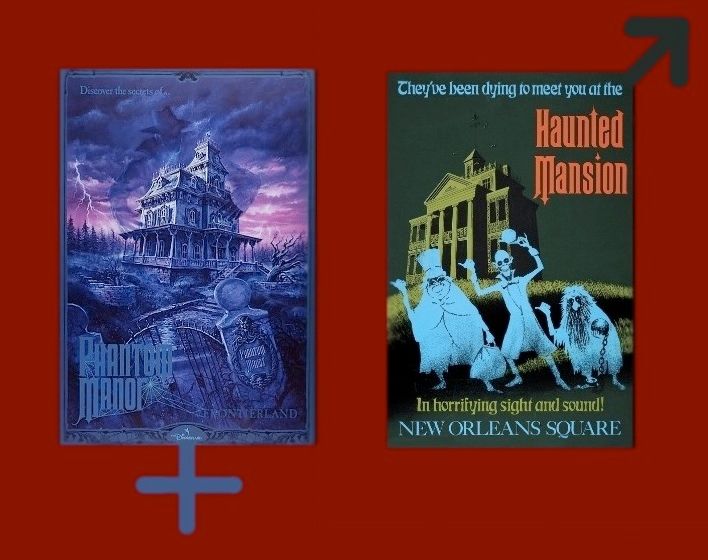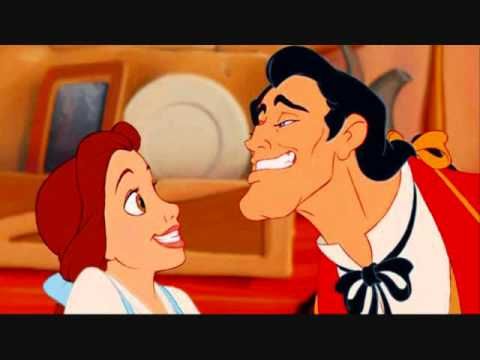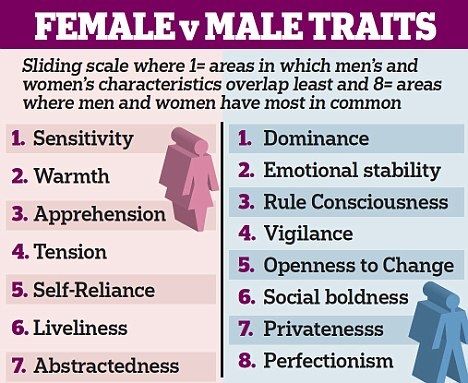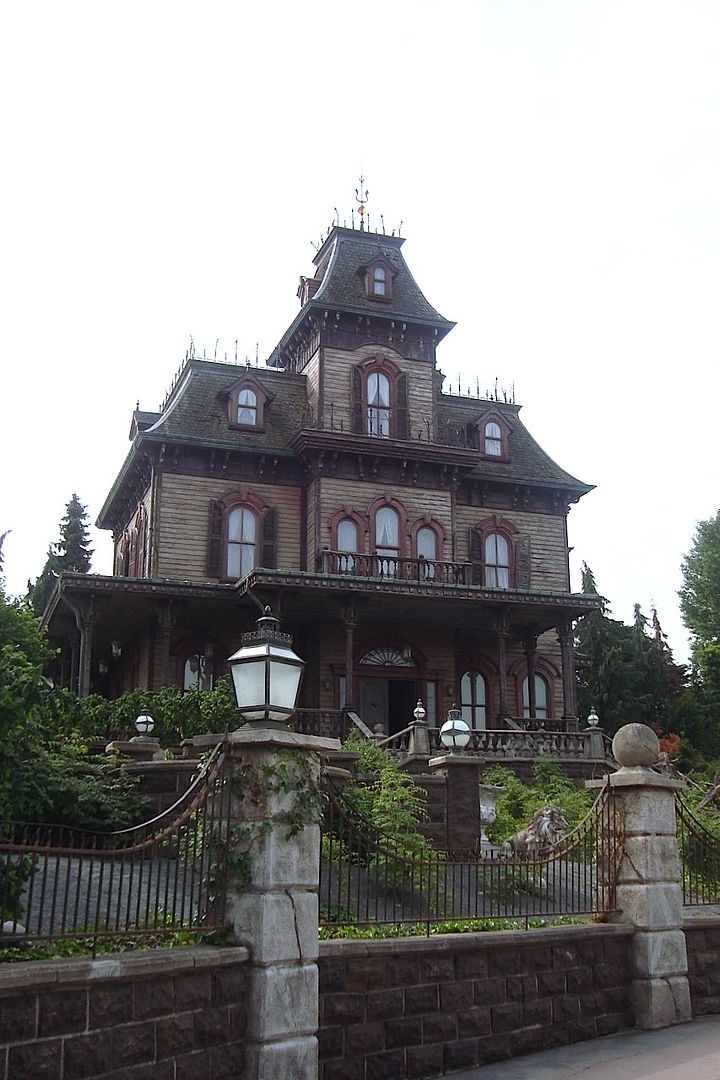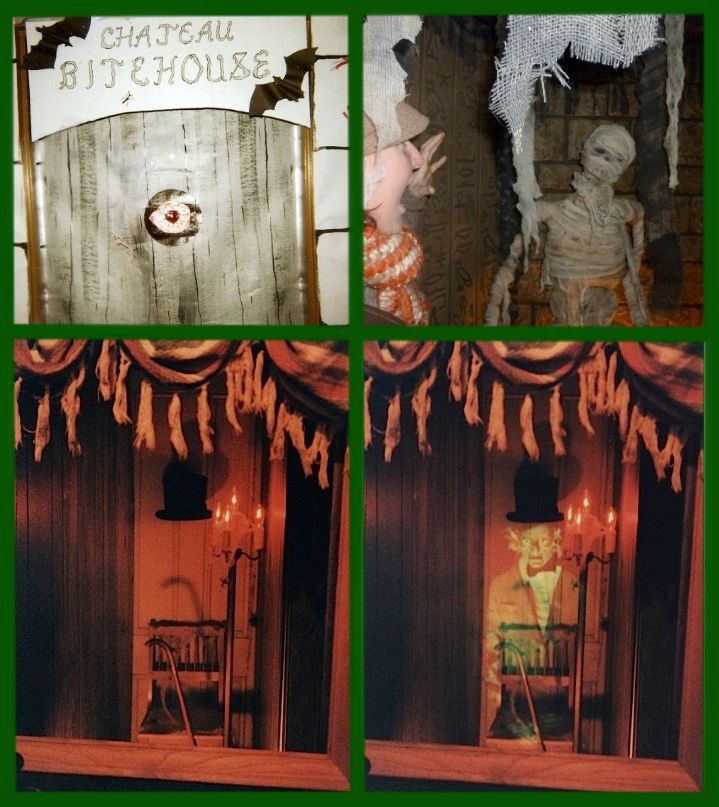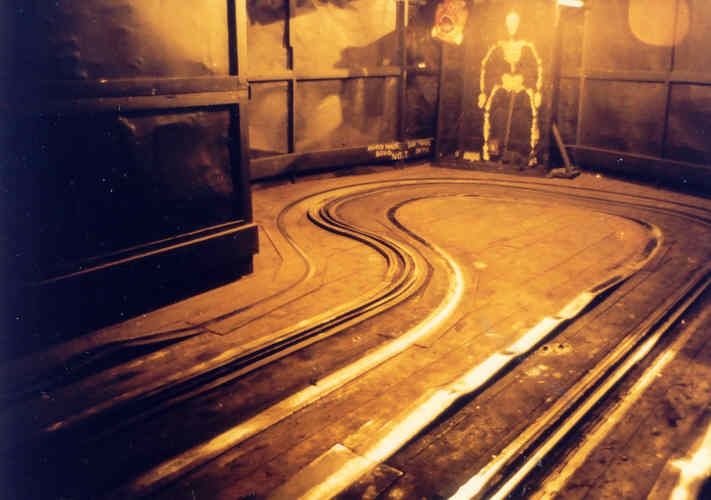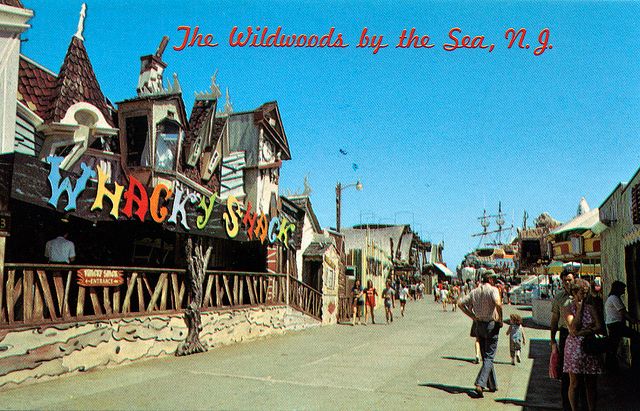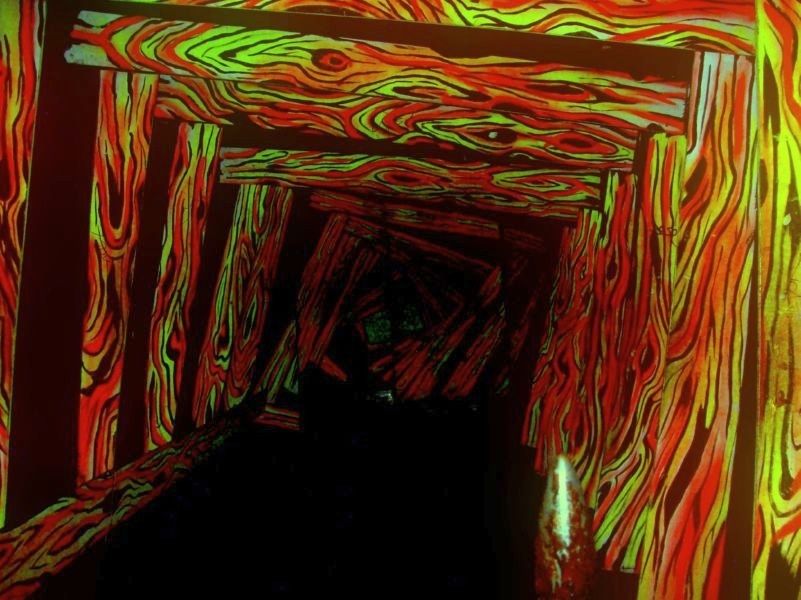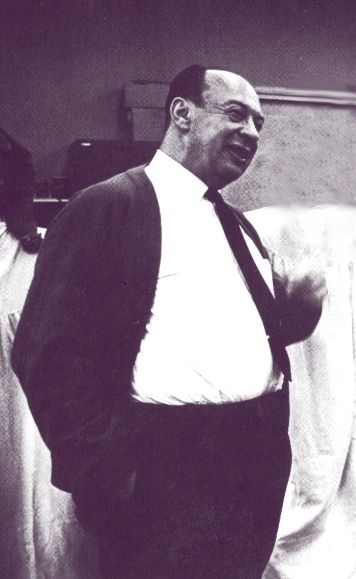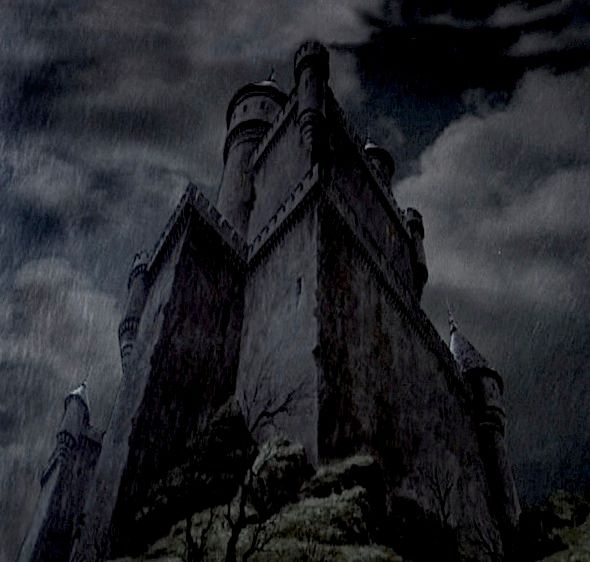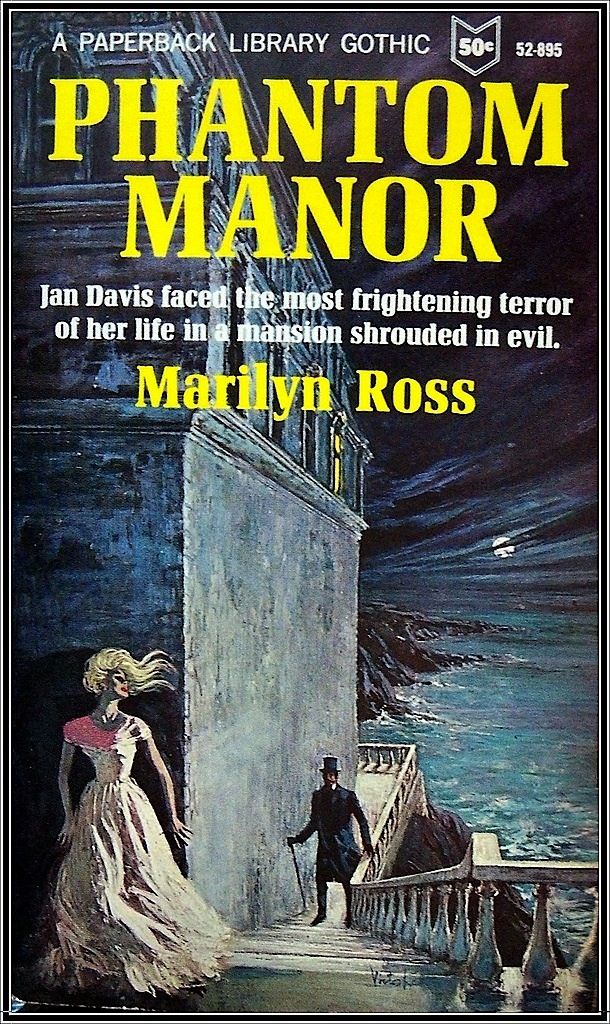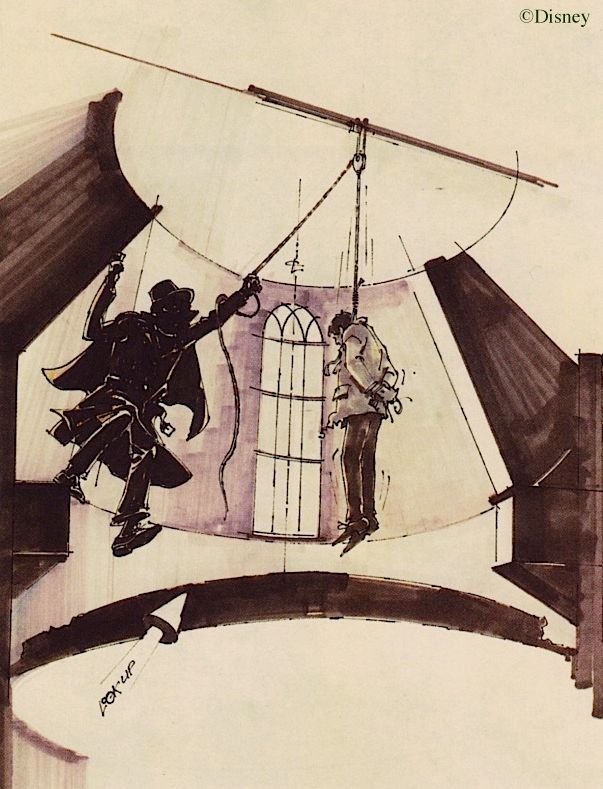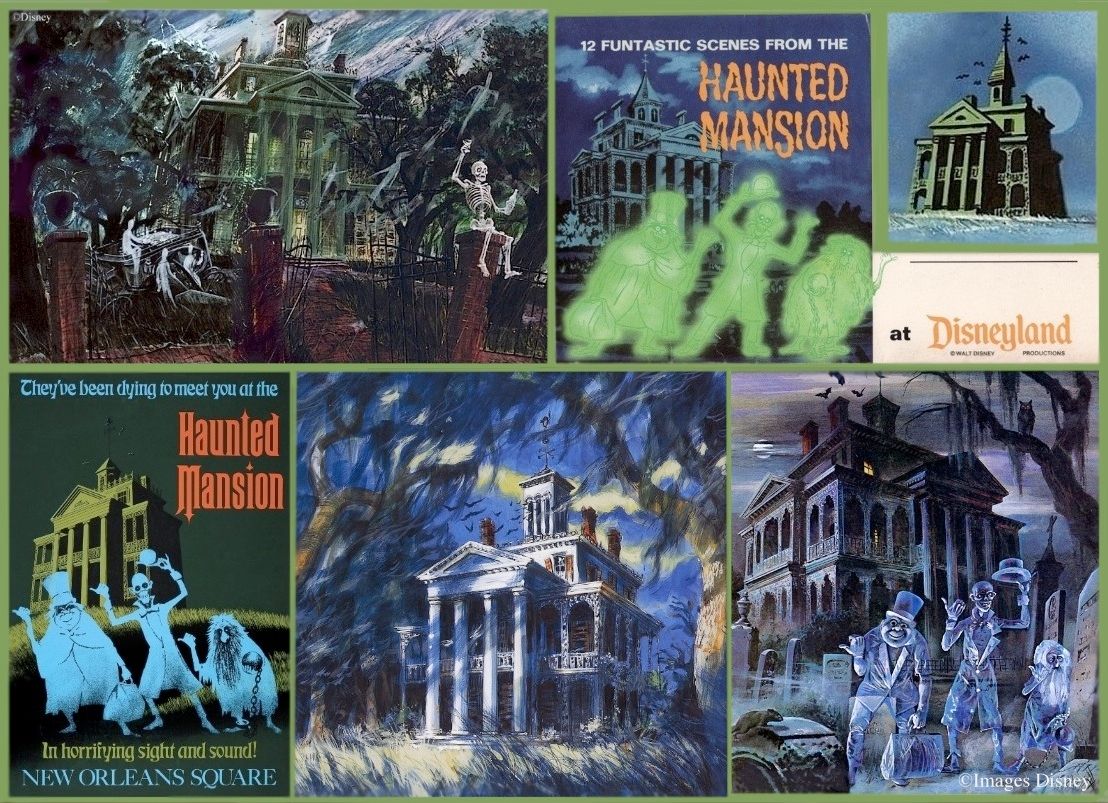.
I've lived long enough to watch the modern feminist movement go through more than one intellectual stage. In the 70's it was still called "women's lib" more often than "feminism" and a bad guy would be called a "male chauvinist" (with the option of adding "...pig") rather than "sexist," but it was the same thing. I remember that at one point the argument de jour was: "Men and women are the same, same, same, except for some incidental plumbing." I don't think anyone ever really believed that, and going into the 80's I remember a countermovement within feminism that stressed how utterly different women were from men. This was another extreme and ultimately indefensible position. At times these neofeminist authors seemed almost ready to embrace the old stereotypes that women were...well...utterly different from men. Sorta like this: "Of course women are lousy drivers. That's because their brains work differently than the brains of the men who devised the cars and roads." Needless to say, that type of argument didn't last.
It seems to me that a commonsense middle position has since swept the field. Men and women are very different, but neither sex is complete or better without the other. Men are from Mars; women are from Venus, blah blah blah. The trouble begins when the male psyche is taken as normative and the female psyche is looked upon as a deviation from that norm. Enormous injustice has resulted from that. Male and female psyches need to be equally respected, with no trivialization of the one, no idolization of the other. At the end of the day, is there any other goal worth taking seriously?
I see a growing acceptance of this view not only within moderate feminist ranks but also within the general culture. Is it possible we're actually learning? Look below. No one but a madman would run an ad like this today, and I dare say the men would be nearly as quick to roll their eyes as the women.
And if you think about it, the sexism at work here is implied rather than overt. It's subtle, and yet it leaps off of the page for many (most?) modern readers. This points to a transformation in the general culture. I suppose they're out there, but personally I don't know any guys who long for the good old days when "women knew their place," and I'm pretty sure men and women alike find Gaston an obnoxious and ridiculous character. Don't believe it? Just you watch, and I'll prove it.
. No one EATS like Gaston,
. Has bad FEETS like Gaston,
. No one likes to sniff bicycle SEATS like Gaston!
There, see? Gaston is a big jerk. I wrote that new verse myself. That's right, a guy wrote that!
" I can tell " ? What's THAT supposed to mean?
I am not saying sexism is dead and there's nothing left to do; I'm just saying it's time to recognize (and rejoice) that an attitude of respect and equality seems to be emerging more and more as the expected, default position in the public square, and artificial arguments that few people ever really believed are losing their punch. These days, instead of ads like the above you'll see articles about men and women and charts like this one in the same magazines, and the only gripes the editors are likely to get are from people who know there aren't three S's in "privateness."
This lengthy preamble is my preemptive strike against accusations of sexism from bitter diehards who despise the new consensus as insufficiently radical. Stop sucking on that lemon for five minutes and go read this classic Dave Barry column. I think we enter a very healthy stage when we can all laugh at ourselves, even when the topic itself is serious. Who wants to be angry all the time?
Now that the cards are all on the table, and you know where I'm coming from, on with the show.
The View from Venus
Gendering the Mansions
I've never been to Phantom Manor in Paris, but I've read about it and seen plenty of photography and video, and I've listened to the soundtracks. It's obvious that PM represents a self-conscious departure from the Haunted Mansion formula used in Anaheim, Orlando, and Tokyo. Based on everything I've seen and heard, I have to say that I don't like PM as much, but I don't have a big problem with it either. So long as the others are still around, PM represents variety, a different take, a change of pace, and on its own terms it seems to succeed well enough.
However, here's my theory as to what really drove them to do something different: The Haunted Mansion is a boy, and Phantom Manor provides the necessary counterbalance. It's all girl.
When I say that the HM has an essentially masculine character, while Phantom Manor is essentially feminine, I have to stress that this has NOTHING to do with appeal. I have to say that because, inevitably, I get a chorus of retorts along the lines of "Well, I'm a guy and I LOVE Phantom Manor," etc. That's irrelevant. That's not what I'm talking about. Girls are interested in guy things, and vice versa, and besides that there's a little man in every woman, a little woman in every man (and they're all scrunched up and very uncomfortable), so appeal isn't the issue.
The Man in Mansion
People unconsciously reflect their outlook on life in anything creative that they do, from important projects to "trivial" ones—like building a haunted house attraction. In fact, I think one of the reasons spookhouses are perennially popular is that in their own goofy way, they are allegories of life, and it's essentially life as seen from a man's point of view, because men build them.
This is the backbone of the "Story and Song from the Haunted Mansion" script. "C'mon, let's keep going" is Mike's mantra all the way through. He takes a dominant leadership role (typical enough for 1969) and poor Karen his girlfriend is a stereotypical female, dragged along by Mike much of the time. They see frightening, threatening, and inexplicable things, and they have to make ad hoc decisions without even knowing if the decisions will make things better or worse. ("Quick, in this doorway!" "Hold the candles; I'll try to open one of these windows." "Come on! It's the only way." "Come on! Stay close.") Mike understands the situation instinctively. You do the best you can. You act. You'll only make it through if you manage to control your fear and keep going.
The spookhouse ordeal is very simple: (1) go in, (2) pass through a series of dangerous and frightening scenes without wetting your pants, (3) go out. Congratulations, you did it. Running that gauntlet is a rite of passage for boys. Admittedly, it's a rite of passage for many girls too, since it's a ticket to "older kid" status rather than "manhood" per se; nevertheless, no girl regards getting up the nerve to go on Zombie Castle as the next step toward becoming a real woman.
If all of this is true, it should not be surprising to learn that the spookhouse has been something of a testosterone spill from the start. To begin with, it's a mechanical construction, a great big jerkety-bang electric train set.
It should be painfully obvious that Phantom Manor is just a Female Gothic novel turned into a ride. It has all the ingredients. Imagineers say they picked the name "Phantom Manor" because it's not too different in French and English, and I believe them. That just makes coincidences like this that much more revealing:
Wonderful Worlds of Color
I'd like to take a quick look at an argument that some may find weak and subjective. Be that as it may, I think gendering is apparent even in the graphic artwork for the two rides. Look at the uses of color. The Mansions have kept to a remarkably consistent palette of greens and blues over the years, with occasional warm splashes of orange and yellow. Your mileage may vary, but it feels masculine to me. Boy's room colors.
So What?
Okay, so the HM is blue and PM is pink. Are there any significant conclusions to be drawn from that? With regard to Phantom Manor, no, not many. It's there. It works. It provides a gender balance otherwise missing. There aren't any plans to tamper with the ride. You go, girl.
With regard to the Haunted Mansions, however, the foregoing discussion may explain why many fans resist and resent the importation of "story" into the ride, whether it's Constance and her husbands or the Dread Family. It's not just that it goes against Davis's prescription; it's a lot more visceral than that. There is this inarticulate but nevertheless very real sense that the ride is being emasculated by such alterations. Possibly the foregoing discussion will be helpful for some of you Mansionites who are equally uncomfortable with those changes but haven't quite been able to put your finger on the reason. Is "castration" the word you're searching for?
I've lived long enough to watch the modern feminist movement go through more than one intellectual stage. In the 70's it was still called "women's lib" more often than "feminism" and a bad guy would be called a "male chauvinist" (with the option of adding "...pig") rather than "sexist," but it was the same thing. I remember that at one point the argument de jour was: "Men and women are the same, same, same, except for some incidental plumbing." I don't think anyone ever really believed that, and going into the 80's I remember a countermovement within feminism that stressed how utterly different women were from men. This was another extreme and ultimately indefensible position. At times these neofeminist authors seemed almost ready to embrace the old stereotypes that women were...well...utterly different from men. Sorta like this: "Of course women are lousy drivers. That's because their brains work differently than the brains of the men who devised the cars and roads." Needless to say, that type of argument didn't last.
It seems to me that a commonsense middle position has since swept the field. Men and women are very different, but neither sex is complete or better without the other. Men are from Mars; women are from Venus, blah blah blah. The trouble begins when the male psyche is taken as normative and the female psyche is looked upon as a deviation from that norm. Enormous injustice has resulted from that. Male and female psyches need to be equally respected, with no trivialization of the one, no idolization of the other. At the end of the day, is there any other goal worth taking seriously?
I see a growing acceptance of this view not only within moderate feminist ranks but also within the general culture. Is it possible we're actually learning? Look below. No one but a madman would run an ad like this today, and I dare say the men would be nearly as quick to roll their eyes as the women.
And if you think about it, the sexism at work here is implied rather than overt. It's subtle, and yet it leaps off of the page for many (most?) modern readers. This points to a transformation in the general culture. I suppose they're out there, but personally I don't know any guys who long for the good old days when "women knew their place," and I'm pretty sure men and women alike find Gaston an obnoxious and ridiculous character. Don't believe it? Just you watch, and I'll prove it.
. No one EATS like Gaston,
. Has bad FEETS like Gaston,
. No one likes to sniff bicycle SEATS like Gaston!
There, see? Gaston is a big jerk. I wrote that new verse myself. That's right, a guy wrote that!
" I can tell " ? What's THAT supposed to mean?
I am not saying sexism is dead and there's nothing left to do; I'm just saying it's time to recognize (and rejoice) that an attitude of respect and equality seems to be emerging more and more as the expected, default position in the public square, and artificial arguments that few people ever really believed are losing their punch. These days, instead of ads like the above you'll see articles about men and women and charts like this one in the same magazines, and the only gripes the editors are likely to get are from people who know there aren't three S's in "privateness."
This lengthy preamble is my preemptive strike against accusations of sexism from bitter diehards who despise the new consensus as insufficiently radical. Stop sucking on that lemon for five minutes and go read this classic Dave Barry column. I think we enter a very healthy stage when we can all laugh at ourselves, even when the topic itself is serious. Who wants to be angry all the time?
Now that the cards are all on the table, and you know where I'm coming from, on with the show.
The View from Mars
For men, life is a test, a proving ground, an arena. "The world" is other, it's an entity apart, indifferent to you at best and hostile at worst. You pass through life, and you hope that your life's work leaves some kind of positive mark behind you, a change for the better. But there will be inner and outer obstacles to this achievement, and those are dragons you must fight alone. You are not a man until you defeat them. Essentially, there are but two characters in the masculine drama: You, and Everyone and Everything else. No matter how deeply and sincerely you are bonded to someone else in love, they can never fight your fight for you.
None of this is news, and you can find plenty of support for it in sociology and psychology. This quote will do as well as any:
Men are made, not born. Across a broad sweep of cultures, this central theme recurs with stunning regularity [....] Unlike women, men must take actions, undergo ordeals, or pass tests in order to become men. They are told to “be a man” whereas women are not told to “be” women (though certainly women too are socialized into gender roles). In this way, a surprising number of cultures converge in treating masculinity as something that must be created by individual and collective will [....] Culture after culture features rites of passage from boyhood to manhood. Only select men can achieve “manhood,” and it must be won individually. (Joshua Goldstein, War and Gender [2001])
The same passage in that book points out that "being a man" means going against instinct, against what "comes naturally." If a "real man" is injured while engaged in a worthwhile task, he ignores the pain and does his duty. If a "real man" is angered, he suppresses his retaliatory impulse and dispenses justice dispassionately, fairly, and rationally. And most importantly for our purposes, if a "real man" is frightened, he does not panic and run away but continues to move forward despite his fear.
The female outlook on life is quite different. The emphasis is on being rather than doing. The world is not a foreign territory, a wrestling opponent, or a dark passageway en route to somewhere else. It's home. It may be a happy one or an unhappy one, but it's home. You're not out to recreate the world from scratch but to understand it and discern the harmonious whole in which you are certain you somehow have a place. That requires diligent and uninterrupted attention to relationships with other people. (Repeat that sentence ten times.) Tests consistently show that on the whole, women evidence less interest in individual accomplishment and more interest in cooperative activity to achieve a common end. There is also a conviction that feelings and intuitions carry their own weight of validity, and since they play as big a role as anything else in determining what people actually say and do, that's a perfectly pragmatic notion. Women have an innate conviction that the world we all live in now is supposed to be a secure, happy, and beautiful place. Again, there's nothing particularly radical or novel about this analysis.
Gendering the Mansions
I've never been to Phantom Manor in Paris, but I've read about it and seen plenty of photography and video, and I've listened to the soundtracks. It's obvious that PM represents a self-conscious departure from the Haunted Mansion formula used in Anaheim, Orlando, and Tokyo. Based on everything I've seen and heard, I have to say that I don't like PM as much, but I don't have a big problem with it either. So long as the others are still around, PM represents variety, a different take, a change of pace, and on its own terms it seems to succeed well enough.
However, here's my theory as to what really drove them to do something different: The Haunted Mansion is a boy, and Phantom Manor provides the necessary counterbalance. It's all girl.
When I say that the HM has an essentially masculine character, while Phantom Manor is essentially feminine, I have to stress that this has NOTHING to do with appeal. I have to say that because, inevitably, I get a chorus of retorts along the lines of "Well, I'm a guy and I LOVE Phantom Manor," etc. That's irrelevant. That's not what I'm talking about. Girls are interested in guy things, and vice versa, and besides that there's a little man in every woman, a little woman in every man (and they're all scrunched up and very uncomfortable), so appeal isn't the issue.
The Man in Mansion
People unconsciously reflect their outlook on life in anything creative that they do, from important projects to "trivial" ones—like building a haunted house attraction. In fact, I think one of the reasons spookhouses are perennially popular is that in their own goofy way, they are allegories of life, and it's essentially life as seen from a man's point of view, because men build them.
Think about it. Whether we are speaking of those garage quickies with rubber masks and flashlights that we made as kids, or Disney's Haunted Mansion itself, most haunted houses are essentially the same thing: A one-way trip through a dark, twisted corridor past scary scenes representing manifestations of death and the threat of death, until you emerge on the other end, preferably through a different door than the one you came in (so as to keep it a corridor in form). With these kinds of make-believe haunted houses, you never pretend that you're moving in. It isn't your house. You pretend that you're exploring it, moving through it, and escaping it eventually.
(upper left pic photoshopped from original by Matthew Hunter Ross)
The only task upon entry is to keep going. The only way you can fail this task is if you chicken out. If you should panic or collapse in fear, someone has to come and rescue you. Which is pretty embarrassing.
It's not hard to decode the allegory. You're born. There's no turning back now. You pass one scary unknown after another until you leave this world. As long as you keep going, you feel you've succeeded in the most basic task, because this world, with all of its threats and perils, didn't defeat you. You didn't collapse; you conquered your fears and kept going. That's a masculine scenario. However, nothing in the allegory addresses the male need to accomplish something with his life. It only speaks of the necessary prerequisite. After all, you'll never succeed if you don't persevere. You must conquer your fear of failure, or of death, or simply of the unknown, before you can hope to achieve anything worthwhile.
This is the backbone of the "Story and Song from the Haunted Mansion" script. "C'mon, let's keep going" is Mike's mantra all the way through. He takes a dominant leadership role (typical enough for 1969) and poor Karen his girlfriend is a stereotypical female, dragged along by Mike much of the time. They see frightening, threatening, and inexplicable things, and they have to make ad hoc decisions without even knowing if the decisions will make things better or worse. ("Quick, in this doorway!" "Hold the candles; I'll try to open one of these windows." "Come on! It's the only way." "Come on! Stay close.") Mike understands the situation instinctively. You do the best you can. You act. You'll only make it through if you manage to control your fear and keep going.
The spookhouse ordeal is very simple: (1) go in, (2) pass through a series of dangerous and frightening scenes without wetting your pants, (3) go out. Congratulations, you did it. Running that gauntlet is a rite of passage for boys. Admittedly, it's a rite of passage for many girls too, since it's a ticket to "older kid" status rather than "manhood" per se; nevertheless, no girl regards getting up the nerve to go on Zombie Castle as the next step toward becoming a real woman.
If all of this is true, it should not be surprising to learn that the spookhouse has been something of a testosterone spill from the start. To begin with, it's a mechanical construction, a great big jerkety-bang electric train set.
One of the first acknowledged masters of the spookhouse genre was Bill Tracy. Tracy invented many of the popular "stunts" that still populate many a carnival dark ride, and his Whacky Shacks and Pirates' Coves were wildly imaginative, psychedelic nightmares (of which few survive).
And Tracy was . . . well, a guy. He loaded up these rides with ludicrous, over-the-top gore, toilet jokes, and buxom, scantily-clad damsels in considerable distress (torture chambers, fiendish saw mills). Tracy's admirers are a little squeamish about this last feature, and I certainly have no interest in defending everything he did. My sole purpose here is simply to point out the overwhelmingly masculine character of these rides which helped define the genre.
Marc Davis was a real guy too. Absolutely nothing girlie about the man.
He's famous for rejecting the notion of "story" in the dark rides he helped develop in favor of a series of experiences. And sure enough, it has often been observed that the true "story" of the HM is not a story at all, it's you-going-through-a-haunted-house. Those real-time experiences are the story, and you are the main character. This is consistent with the whole spooky dark ride tradition, where the tableaux are loosely connected at best and generally function as a series of tests of your nerves, confronting you with the reality of death. What has not been observed is that this approach reflects a quintessentially male outlook on life.
YOU as main character + THE WORLD as an ordeal
you pass through = masculine view of reality.
you pass through = masculine view of reality.
The Manner of Phantom Manor
A popgun string of disconnected experiences is not particularly interesting to females. There needs to be some sort of story, however threadbare, before it engages them, because human relationships are what it's all about. Look, you're never absolutely alone. Life is a web. Everything is connected to everything else. True, the Haunted Mansion has no story, but the world it presents hangs together so well that it always feels convincingly like there could be a story (better: like there IS a story), and apparently that's enough for female Mansion aficionados to feel at home. It's really what sets the HM apart from the typical spookhouse, where the various scenes often have no logical connection whatsoever with each other.
But women have their own idea of what horror is, and it's not hard to find it. There is a thriving literary sub-genre known as "Female Gothic" or "Women's Gothic" (with its own sub-genre, the "Gothic Romance"), which has been fueled by a steady stream of female authors, going back virtually to the birth of the Gothic fiction genre, and it has been sustained down through the years by a predominately female readership.
(I suspect that some of you readers are much more qualified than I to approach this subject, and I will look forward to any comments that may result in a revised and improved survey.)
Traditional Female Gothic novels stick to a predictable template: A young, virginal woman, unattached, becomes trapped in some sort of evil enclosure created by a perversion of normal human relationships, especially with regard to men. Thus, her father, or uncle, or beau, men who should naturally take a protective role, turn out to be monsters of depravity. Other women (usually older) may be extremely cold and cruel, or uncommonly naïve and stupid, perverting and weakening the natural roles of motherhood or sisterhood or friendship. Quite often the parents are good, but they both die while the Gothic heroine is still young, leaving her vulnerable to less virtuous relatives. Clergy are invariably weak and often evil, offering no help and no solace. In brief, the safety net of proper human relationships turns out to be a spider's web, and there is no escape, because that web is reality, it is life. What should be home has become a trap, a dark castle full of terrors.
In traditional Female Gothic, the heroine is eventually rescued by some kind of knight in shining armor. A man's response to the same situation would be, "This sucks. I'm outta here. And if Uncle Silas tries to stop me, I'll just whack him with this fireplace poker. If I fail, hey, at least I failed trying." But that contrast misses the point. The Gothic heroine may pick up the poker at some point, but don't count on it. She is much more reluctant to go that route because she simply does not see an alternate reality. These books depict for female readers a nightmare, and it's a nightmare of helplessness and isolation, the collapse of goodness and beauty in a world with no apparent exit. In light of the feminine view of reality, that is a chilling concept indeed. It's a formula that sells and sells and sells.
Female Gothic invented the denouement known as the Supernatural Explained, and the genre has continued to lean heavily upon it. You learn at the end that the ghostly doings were nothing but malicious tricks with wires and trapdoors, or else it was all a mistake, and we're treated to a "scientific" explanation of the supernatural phenomena. (Think of the Nancy Drew mysteries, some of which borrow not a few elements from this genre.) This comes as exceptionally good news because the book then concludes by revealing that the wholesome web of reality is still the real one, and the dark and horrible one was illusory. The terrors were errors and the nightmare is over.
So how does this relate to haunted house attractions?
Little girls like to make haunted houses too, but unless she's got a lot of tomboy about her, what you typically get is theater, not the dark twisted corridors described earlier. She's got her shawl and robe and is mistress of some castle (or whatever) and you're met at the door by this pint-sized Morticia Addams. She'll likely have you sit down (not "keep going") while she tells you all about life in her castle, delivered in the most sepulchral voice she can manage. You're a spectator. You're invited to relate to someone else's make-believe life. Phantom Manor, here we come.
It should be painfully obvious that Phantom Manor is just a Female Gothic novel turned into a ride. It has all the ingredients. Imagineers say they picked the name "Phantom Manor" because it's not too different in French and English, and I believe them. That just makes coincidences like this that much more revealing:
(from 1966)
In Phantom Manor, nothing is your story: it's entirely Melanie's story. The basic plot is that Melanie's father killed her fiance and kept her a prisoner in the house. Now their ghosts haunt the place. There's a lot more, but many details are purposely kept vague.
So you see Melanie's ghost, and— "Why look, she's...she's crying! Poor thing! What could have happened here?" You're sucked right in, now it's relate, relate, relate. Men can certainly do this, but with women it's like breathing.
You can see the contrast with the HM already in the stretching room. Unlike the portraits in the other Mansions, at PM you just get the same message repeated over and over. It's Melanie-in-peril x 4. In the Haunted Mansions, the Ghost Host tauntingly invites YOU to commit suicide. In Phantom Manor, you're only a spectator, a witness to a murder.
Phantom Manor is plainly theater. It even has a lush, cinematic musical score (it's magnificent), but if you just can't seem to give a rat's bladder about Melanie, then a lot of PM is bound to be tedious. Part of the problem for me is that I'm not impressed with Julie Svendsen's portraiture. Her Melanie has no personality. I'm sorry, but to me she looks like a stuffed deer. Maybe I'm missing something that others see.
Wonderful Worlds of Color
I'd like to take a quick look at an argument that some may find weak and subjective. Be that as it may, I think gendering is apparent even in the graphic artwork for the two rides. Look at the uses of color. The Mansions have kept to a remarkably consistent palette of greens and blues over the years, with occasional warm splashes of orange and yellow. Your mileage may vary, but it feels masculine to me. Boy's room colors.
Now turn to Phantom Manor. Is commentary even necessary? The swish of lace
petticoats whispers through this artwork. And *sniff* do I detect a trace of perfume?
petticoats whispers through this artwork. And *sniff* do I detect a trace of perfume?
So What?
Okay, so the HM is blue and PM is pink. Are there any significant conclusions to be drawn from that? With regard to Phantom Manor, no, not many. It's there. It works. It provides a gender balance otherwise missing. There aren't any plans to tamper with the ride. You go, girl.
With regard to the Haunted Mansions, however, the foregoing discussion may explain why many fans resist and resent the importation of "story" into the ride, whether it's Constance and her husbands or the Dread Family. It's not just that it goes against Davis's prescription; it's a lot more visceral than that. There is this inarticulate but nevertheless very real sense that the ride is being emasculated by such alterations. Possibly the foregoing discussion will be helpful for some of you Mansionites who are equally uncomfortable with those changes but haven't quite been able to put your finger on the reason. Is "castration" the word you're searching for?
